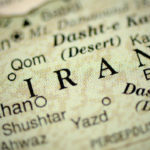
(LONDON) — The third week of nationwide protests in Iran turned particularly violent Sunday when security forces besieged Sharif University, a prominent university in the country, and closed the main gates of the facility where hundreds of students were protesting.
The violent confrontation led to arrests and injuries, according to eyewitnesses who shared their accounts on social media sites such as Vahid Online.
The unrest swept the country after the suspicious death of Mahsa Amini, a 22-year-old woman who died in the custody of the morality police, which arrests women for not wearing a hijab properly. Protests, however, soon went beyond the condemnation of the morality police and turned into a movement against the Islamic Republic, with slogans demanding the toppling of the regime.
Reports from inside Sharif University Sunday night described the atmosphere as “dreadful.” Many shared accounts of students being trapped inside the university and told to leave the premises through a parking garage. Once they got there, however, the students found themselves encircled by the guards who were waiting to arrest them, the Sharif University Islamic Association reported. Students were tear-gassed and shot by pellet guns, paintballs and rubber bullets, according to the association.
In his first comments about the protests since they broke out on Sept. 17, Iranian leader Ayatollah Ali Khamenei blamed the U.S. and Israel for the unrest.
“The incident that happened in which a young girl died was a bitter one. Our hearts were also broken,” he said Saturday in a graduation address for the country’s armed forces.
Accusing protesters of making the streets “unsafe” by setting cars and banks on fire, he said people should have waited for the results of the “investigation.”
“I say clearly that the riot is designed by America, the Zionist regime and those on their payroll,” Khamenei said, alleging that some of the protesters have links to the country’s former monarch or some of its opposition groups.
According to the Iranian penal system, such accusations can put people behind bars for years or even put them at risk of execution.
According to Iran Human Right, the death toll from the protests was 133 on Sunday, 40 of whom were killed in an attack in the southeastern city of Zahedan on Sept. 30.
State-linked media, however, confirmed only 19 of the casualties in Zahedan and accused “separatists” of the attacks in the southeast.
The Islamic Association of Sharif University Students said it invited “students and professors of universities across the country to close their classes as a sign of solidarity with the professors and students of Sharif University.”
The call for the strike was received by many university students who kept protesting despite the crackdown on the Sharif University protests.
While other strikes were announced by small business owners, teachers and some labor associations, the excessive violence against university students has raised concerns.
The first open call for a strike was issued by the Coordinating Council of Teachers’ Cultural Associations on Sept. 26. The Council “strongly condemned” the violent action taken by the state against protesters, especially students, and asked all working and retired educators to stand with the protesters.
“Nationwide strikes cause psychological pressure on the repressive forces to realize that many people agree with the protesters,” a Health Ministry employee told ABC News. He asked that his name not be used for fear of retribution.
“I hope people understand they would be better off striking in the long run because nothing matters as much as togetherness and unity,” he said.
Copyright © 2022, ABC Audio. All rights reserved.
